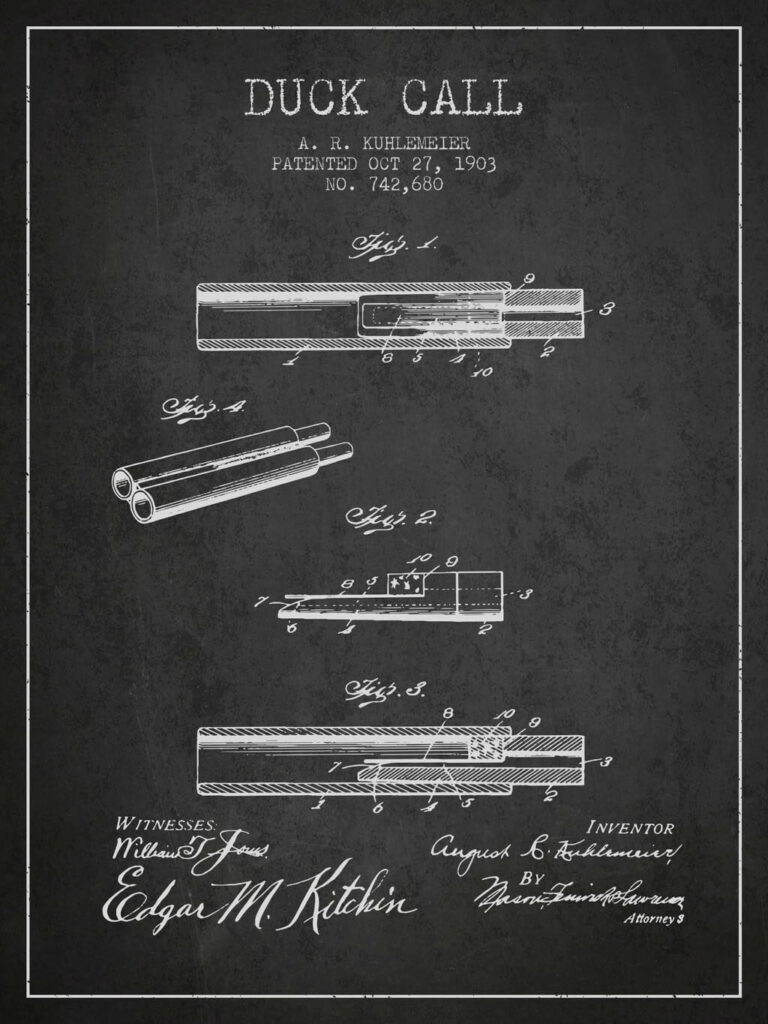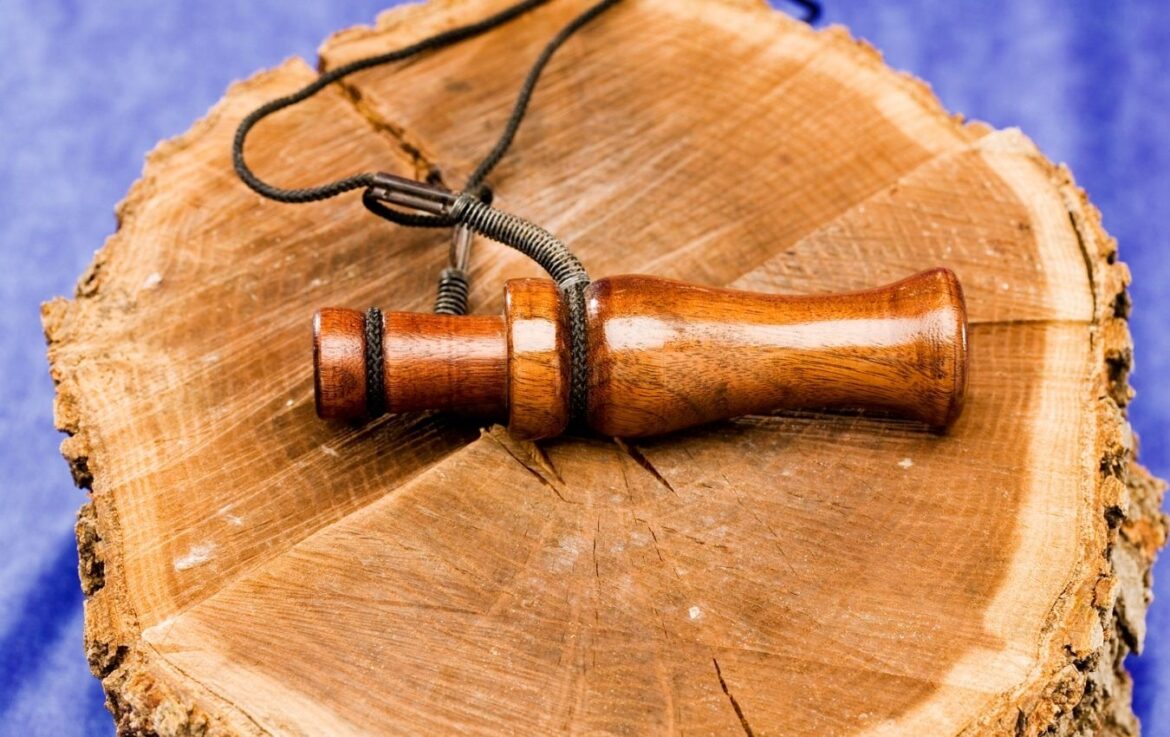Table of Contents
If you’ve ever found yourself nestled in a duck blind before dawn, you know that the symphony of nature isn’t complete without the melodic sound of a duck call. It’s not just a gadget; it’s an essential tool in the hunter’s bag that bridges the divide between man and fowl.
But to truly master the duck call, you must first get acquainted with its anatomy. Fear not, dear hunter, for I am here to guide you through the nooks and crannies of this remarkable instrument.
Understanding the Duck Call

A duck call is not just a piece of wood or plastic you randomly blow into and hope for the best (though, let’s be honest, we’ve all been there). It’s a delicate instrument crafted to mimic the various calls of ducks. But before you can serenade the skies, you’ve got to know your tool.
The Barrel
The barrel acts as the main body of the duck call and is where you’re going to put your lips to work. Made from wood, acrylic, or polycarbonate, the barrel’s design isn’t just for looks; it affects the resonance and depth of sound. Trying to call a duck with a poorly crafted barrel is like trying to charm a date with bad breath – it’s not going to go well for you.
The Insert
Next, we have the insert. This is where the magic happens, folks. It’s the business end of the duck call where the sound is fine-tuned into something that would make even the wariest drake swoon. The key components of the insert are the reed, soundboard, and tone channel, but we’ll get into those in just a moment.
There is a reed that is secured in the place against the tone board. If air is forced under the reed, it helps in vibrates. The reed is made of hard rubber, metal, or plastic. If you are a newbie, you might need time to make the vibration perfect.
But for the experienced people, the vibration will sound like a mallard hen, yes you heard right! As we have already told you, it is the end where the duck sound is produced; you can never keep the area blocked. As a hunter, all you have to do is make sounds like OAK, WUIT, or HUT for making a single quack. If you want to make a feeling call, you have to repeat TIKI-TAKA or DUGA-DUGA.
The Reed
The reed is a thin piece of Mylar or cane that vibrates to create sound. Without a reed, you might as well be throwing pebbles at the ducks hoping to get their attention. Thickness and material matter here; too thick, and your reed is stubborn, refusing to vibrate correctly. Too thin, and it’s like a flimsy handshake – not very convincing.
If you go for single reed calls, it will give you the most note variance. On the contrary, if you rely on multi-reed calls they will be limited in their range of notes. In most cases, multi-reeds will vibrate against each other. It helps in regulating the number of notes the call makes.
The Soundboard
Coupled with the reed is the soundboard, the unsung hero of the duck call that gives the sound its distinctive character. It’s like the difference between playing a note on a grand piano versus a toy keyboard. Detail is paramount, and the shape and surface of the soundboard will determine if you’re about to play a symphony or if you’re just honking away aimlessly.
The Tone Channel
Lastly, there’s the tone channel, which guides the air and vibration into one delicious, duck-enticing note. It’s a bit like a sculptor’s chisel, shaping the raw sound into a thing of beauty (or at least something that sounds quacky enough to do the job).
The Wedge
Let’s not forget the wedge, the often-overlooked piece that holds the reed in place. Suspect your call is off-key? The wedge may have shifted, turning your dulcet tones into duck-repelling noise.
The Stopper
The stopper is the part that connects the barrel and the insert. It’s like the lug nuts on your truck; without it, you’re not going very far.
How It All Comes Together
When you blow into the barrel, your air is an unrefined raw material entering an acoustic factory. First, it meets the reed, which like a tiny woodwind section in an orchestra, vibrates to create the basic sound. It then travels through the tone channel, getting shaped by the soundboard, before the insert focuses it into the sweet quack, feed call, or hail call that brings the ducks on a silver platter.
Things that Affect the Sound:
There are specific things of a duck call that affects the sound. After you know about the parts, you have to know about these too so that you can keep your eyes on those parts to make the right duck call.
- The reed flexibility.
- The position of the end part of the reed to the starting part of the voice through the channel.
- The reed thickness and length.
- The curvature of the reed fogs (when they start approaching the voice through the channel).
- The voice length through the channel.
Tips for Duck Call Mastery
- Know your call parts: Just like knowing every blemish and feature on your trusty shotgun, knowing your duck call inside out will keep surprises to a minimum.
- Maintenance is key: Don’t let dirt or moisture make a home in your call. Keep it clean, and it will return the favor.
- Practice makes perfect: Your couch may learn to fly with all the calling practice you’ll need. But better the couch than the ducks, right?
- Sound is subjective: Each duck call might hit a duck’s ears differently. Don’t be afraid to adjust and experiment until you find that sweet spot that says, “Hey, come hang out here!”
Signing Off
Like any good hunter knows, the right gear, knowledge, and practice make all the difference when it comes to success in the field. And when it comes to duck calling, understanding the inner workings is just the beginning.
Use this knowledge wisely to finesse your technique, and you’ll be the pied piper of ducks before you know it. Happy hunting, and may your calls always be music to the ducks’ ears!

